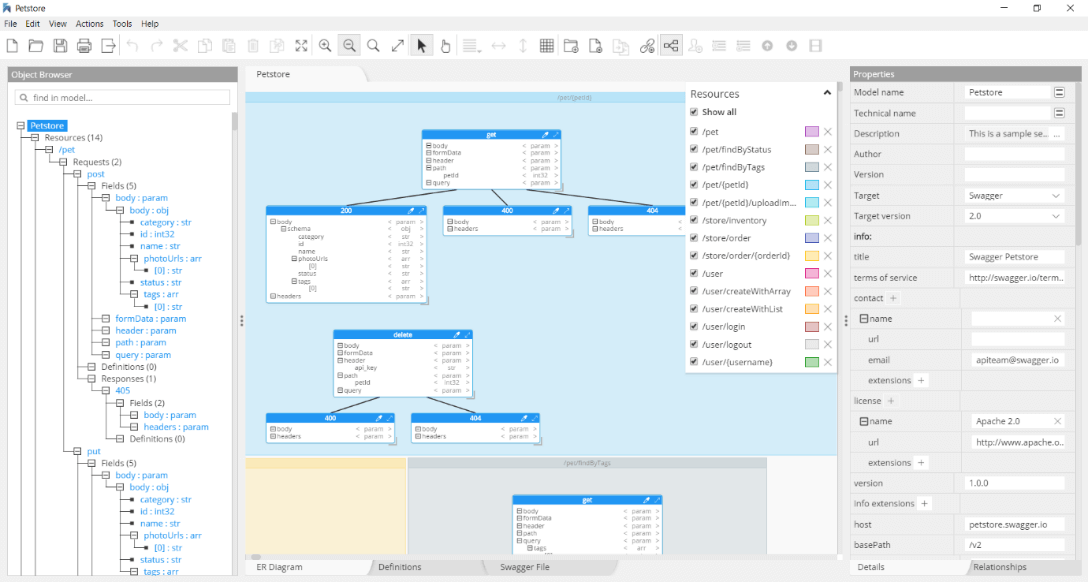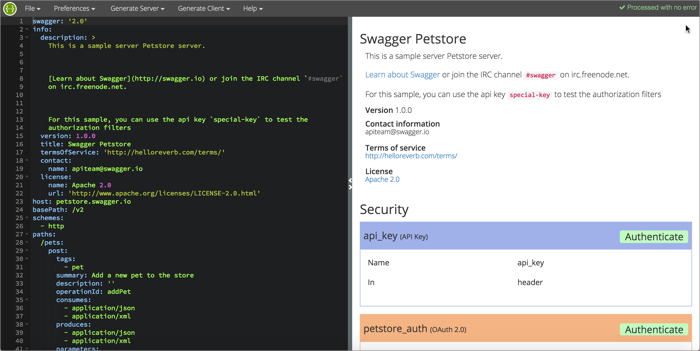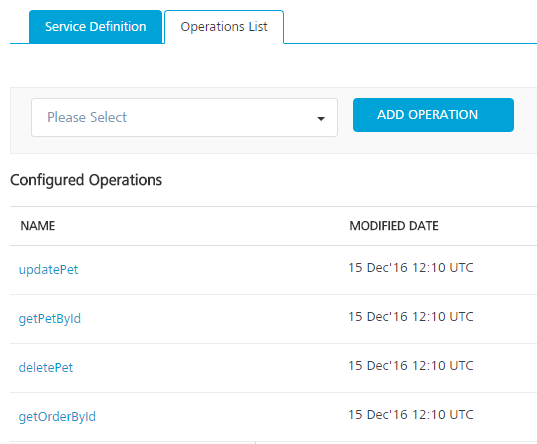

- #Swagger editor nested yaml update
- #Swagger editor nested yaml software
- #Swagger editor nested yaml free
The team can implement logic, update functionality and optimize processes, and as long as it abides by the input and output defined by the API contract, it can be confident that changes won’t affect other teams in the organization. The use of a standard specification like the OpenAPI Specification (OAS) makes this process easier and enhance adoption throughout your organization.

The person responsible for creating stories or tasks for development efforts can reference the documentation to help explain the requirements. The benefit of having API documentation available before development is that inputs and outputs are clearly defined. The resulting documentation should be agreed upon by all parties and published for everyone before writing a single line of code. It is critical to involve the business, product owners, engineers and subject matter experts in this effort. It may be useful to start by developing API standards based on domain-driven design and first focusing efforts on APIs that expose functionality between teams.ĭesigning APIs starts with an exercise in determination of business requirements. It is important to treat API as a contract, pay adequate attention to details, and produce comprehensive documentation.

The approach reduces dependencies between different teams working on the APIs, such as front-end and back-end teams, architects, tech writers and QA, so as to let them perform their functions at a much faster and efficient rate.Īn API’s design is a solid blueprint upon which to build your API and it gives a comprehensive overview on all the endpoints and CRUD operations associated with each of them. Designers can now focus on the API consumer's needs. It defines the interactions between the application and the rest of the organization, or the outside world.Ī definition-driven approach brings many benefits that directly relate to a schema consumption-centric approach to API development. API design is in fact the process of modeling the contract between the client and the server. It is important to design the API's interface and to detail the exact requests and responses of API endpoints, even before you start building the API's business logic, or before you start any development. It is more powerful when it comes to describing the request response models and underlying security information.īuilding an API is hard. Compared to Swagger 2.0, the OpenAPI specification 3.0 is more modular, with a reusable approach to defining the API.
#Swagger editor nested yaml software
Swagger 2 was originally introduced by SmartBear Software who later donated it to the Open API Initiative which now maintains this world standard API definition language. The resulting file, in JSON or YAML, can be used to generate code, produce documentation, and create simulations of the services described. The OAS specification is a language-agnostic programming tool to help developers design, build, describe, and consume RESTful webservices without having to look at the source code, extra documentation or having to inspect network traffic. The OpenAPI Initiative hosts the community-driven specification on GitHub. The OAS is to REST what WSDL was to SOAP. The OpenAPI Specification (OAS), previously known as Swagger, provides a common framework, a set of rules, to let people and computers discover and understand the capabilities and characteristics of a service. That’s the true added-value of documenting API specifications with Swagger or OpenAPI. Documenting APIs becomes essential to make sure that everyone across large IT organizations understands transactions structure and semantics. Many companies adopt an API-First approach to accelerate development and enhance collaboration between domains. They are also driving strategic integrations of third-party services for shared revenues and growth. They allow businesses to build applications and scale faster. By contributing to the Treeware forest you’ll be creating employment for local families and restoring wildlife habitats.APIs (Application Programming Interfaces) are central to the way software runs today, and represent a growth opportunity for enterprises. If you use it in production, then we ask that you buy the world a tree to thank us for our work.
#Swagger editor nested yaml free
Swagger Parser is 100% free and open-source, under the MIT license. To build/test the project locally on your computer: Open an issue on GitHub and submit a pull request. I welcome any contributions, enhancements, and bug-fixes. API Documentationįull API documentation is available right here Contributing Some bundlers may require a bit of configuration, such as setting browser: true in rollup-plugin-resolve. To use Swagger Parser in a browser, you’ll need to use a bundling tool such as Webpack, Rollup, Parcel, or Browserify. Older browsers may require Babel and/or polyfills. Swagger Parser supports recent versions of every major web browser.

Import SwaggerParser from " " Browser support


 0 kommentar(er)
0 kommentar(er)
